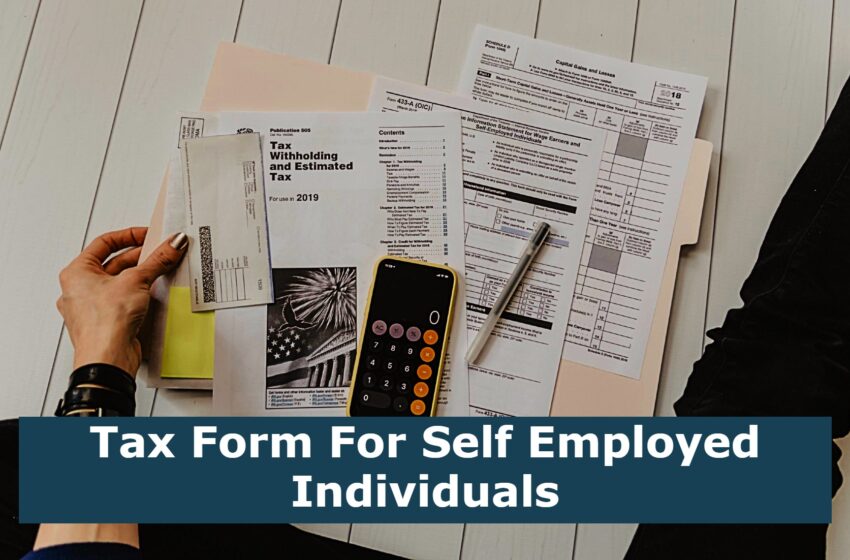
Tax Form For Self Employed Individuals
The IRS has a variety of forms that you can use to report income for your self-employment business. They include Schedule SE, Form 1099-MISC, and W-4. You should familiarize yourself with these documents before filing your taxes, as they can affect your tax refund.
W-9
The IRS Form W-9 is an essential tool for self-employed individuals to comply with their tax obligations. It is also used by businesses to gather and report information from their external workforce.
There are many instances when a W-9 form will be needed. For example, if you’re a freelancer, you may need to send one to your client each time you work for them. Likewise, if you’re a corporation, you’ll need to collect and file the form with the IRS.
If you’re receiving a W-9 form, make sure to verify that it contains all the required information. This can include the name of the taxpayer, their SSN, their address, and the business they work for.
In addition, you’ll need to determine whether the person filling out the form is an independent contractor or an employee. Independent contractors do not pay Social Security taxes, but they must file a W-9 to report their income. Companies with employees, however, must withhold a percentage of their earnings for FICA taxes.
1099-MISC
If you are a self-employed individual, you need to know how to fill out Form 1099-MISC. The IRS form is used to report miscellaneous payments that you receive. You must file the form with the IRS before the end of the year.
To get started, you must input your name and social security number in the appropriate boxes on the form. In box 6, you must include your name, address, and tax identification number. In box 18, you must record the amount of tax withheld from your pay.
You also must report all other income, including royalties, prizes, rents, awards, and other income. This includes cash received for health care. Generally, you are not required to file a 1099-MISC if your total gross income is less than $600.
You should receive a copy of the form from your employer. You can then attach the form to your tax return. However, you should also mail a copy to the IRS.
Schedule SE
The IRS provides the Schedule SE for self employed taxpayers. It is a relatively complicated form and is only useful if you have a professional on hand to do it for you. In its most simplistic form, the schedule is a worksheet that will tell you how much tax you owe. This includes FICA and Medicare taxes. To figure out how much tax you owe, you will have to calculate your gross income, net profit or loss, and deduct the appropriate taxes.
There are several variants of the flimsy, such as the schedule C. Unlike the W-2, this is not mailed out to your employees. It is available electronically. Aside from the usual suspects, you might want to include a couple of non-payroll related receipts. If you own a business, you may want to consider using an accounting software package to handle the tax filing for you.
If you are a self employed babysitter, you are probably aware that you are required to fill out a form. But what exactly is it?
W-4
The new W-4 form is designed to be more transparent and more convenient to use for accurate withholding. It uses the same underlying information as the old form, but adds more clear lines for adding amounts. This will make it more likely that employees will be more accurate when calculating withholding.
Unlike the old form, the new one replaces complicated worksheets with simpler questions. It can help you determine the amount of taxes to withhold, and reduces the tax you owe on your tax return.
When you are filling out the W-4 form, you’ll need to provide your name, address, Social Security number, filing status, and other personal information. You will also have to include any changes in name or other information.
Depending on how your tax situation has changed, you may have additional taxes to withhold. For example, if you have a second job, you might have to withhold extra tax. Similarly, if you have a dependent, you might owe on that person’s tax.


